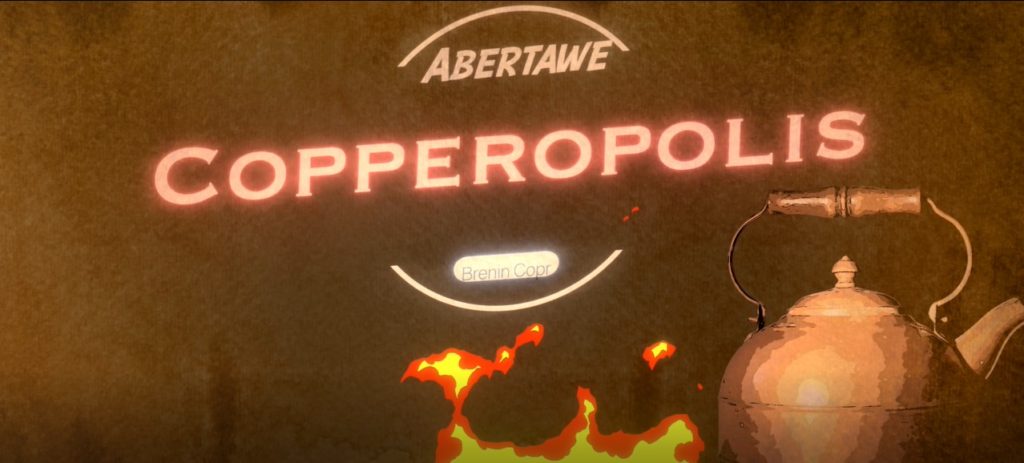Hannah Nielsen
I have always had a fascination with history and storytelling. I was most fixated on the people of the past and their individual stories. After finishing my BA in History at Swansea University, I wanted to understand more practically what all this knowledge of the past means for us today and I enrolled on the MA in Public History and Heritage. Ultimately, history is the collection of stories. Public history and heritage take historic findings and weave new stories that connect us in the present, to the past.
Interpreting these stories became central to my MA work, especially through my work placement with CHART (the Centre for Heritage Research and Training). My placement project entailed creating a heritage immersion week for primary schools in Swansea, focused on the Hafod Morfa copperworks. The aim of the week was to teach the children about heritage and who chooses the stories that are told and remembered. From this, the children then created their own class museum using the tools that they had been taught through the week. By placing the children at the center of their own heritage interpretation and encouraging them to think critically about the stories they chose to tell, they took ownership of the local past and engaged more deeply with the world around them.
While working with the project team to create and collate the resources for the week it became apparent that the copperworks needed to be framed within its historical context in order for the children to assess its impact on them in the present.
To provide some background, I started looking for a short video introducing the idea of the Industrial Revolution. There were a few videos, but they were too England focused and didn’t accurately reflect the industrial Revolution in Wales. The project team then felt this was an exciting opportunity to tell the neglected story of Industrial Wales. I was asked to write the script for a short animation video telling this story. Originating within the project, the final video has a broader impact as it can be used in schools across Wales and connected to their own local industrial stories. Using the skills gained through my MA I now work at the Roald Dahl Museum and Story Centre in Great Missenden in Buckinghamshire. My role in museum learning engages directly with storytelling by encouraging school groups and families to tell their own stories.
The aim of the museum is to encourage all who come to unlock the stories within them through the works of the author Roald Dahl. Through the learning programme, school groups learn about Roald Dahl’s writing techniques. They get to see pieces of archive and explore the museums galleries, as well as create their own characters or stories using Roald Dahl’s methods. These opportunities to learn creatively also extend beyond the museum walls to the schools that are unable to travel to the museum through the new livestream programme. Across the museum, each child (and adult too!) is given permission to find the magic of Roald Dahl within themselves. Roald’s stories always focus on the child, making them central and giving them power.
Here at the museum, this ethos is recreated through the learning programme. Children are given agency to discover things for themselves; that all ideas are legitimate. All stories want to be told; it is up to us which ones we choose to tell.
